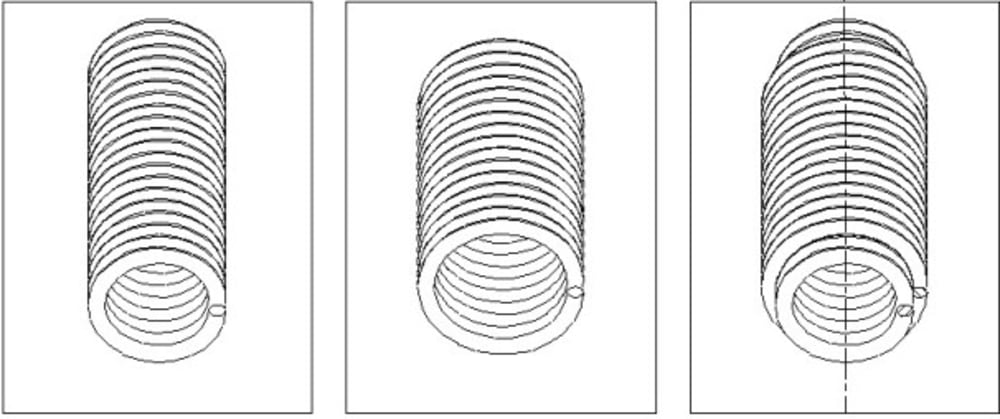Magnetic assemblies, for switching power excitation, using Sector Torus Core sections, in conjunction with round rod core sections,and two layer coherent windings, can weigh half as much, cost half as much, and have half the energy losses, when compared to assemblies in current production. Typical magnetic assemblies include Inductors, Coupled Inductors, Transformers, Motors, Generators, Motor-Generators and Actuators.
The lower core losses are produced by operating at much the same frequency and flux level, generating much the same specific loss, but multiplying the specific loss, by less than half the volume, when compared to ordinary ferrite shapes, or ordinary core shapes for motors or generators.
The lower copper losses are from being able to use larger wire, without increasing layer count, while also decreasing winding wire length, by using only two layers.
Lower cost, in high production, results from using less material. All of the other costs will decrease, on a unit basis, with high production, leaving material cost as the determining factor.
Illustration 1. is axial and canted views, of 90 degree, and 120 degree, sector torus shapes.
Illustration 2. is a 3D assembly of 90 degree Sector Torus Core shapes
Illustration 3. shows how the two layers of a coherent winding are related.
Winding lay describes the handedness of windings. Windings in right lay, form right handed threads.
Pitch describes the axial separation between turns. Pitch should be minimal for the wire size, and the winding width available on the core.
Coherent windings have the same pitch, and the same lay, on all layers.
Properly designed magnetic assemblies, utilizing Sector Torus Cores, and rod cores, have coherent windings, as wide as the entire magnetic path length of the core.
Inductors, coupled inductors, and transformers, for switching power service, use ferrite cores. Inductors utilize lossless energy storage in gaps, formed by shimming the joints between core sections. This splitting of the total gap, into multiple narrow gaps, dramatically decreases fringing effects, and interactions between fringing flux, and windings.
Motors, generators, and actuators, use core sections, in sector torus, and rod shapes, made from laminated silicon steel. The structural components, including the case, are typically from glass reinforced laminate, greatly reducing both the weight and cost.
Like this entry?
-
About the Entrant
- Name:Newt Ball
- Type of entry:individual
- Software used for this entry:Turbocad 12; NL5; TinyMCE Windows Office 93
- Patent status:pending








